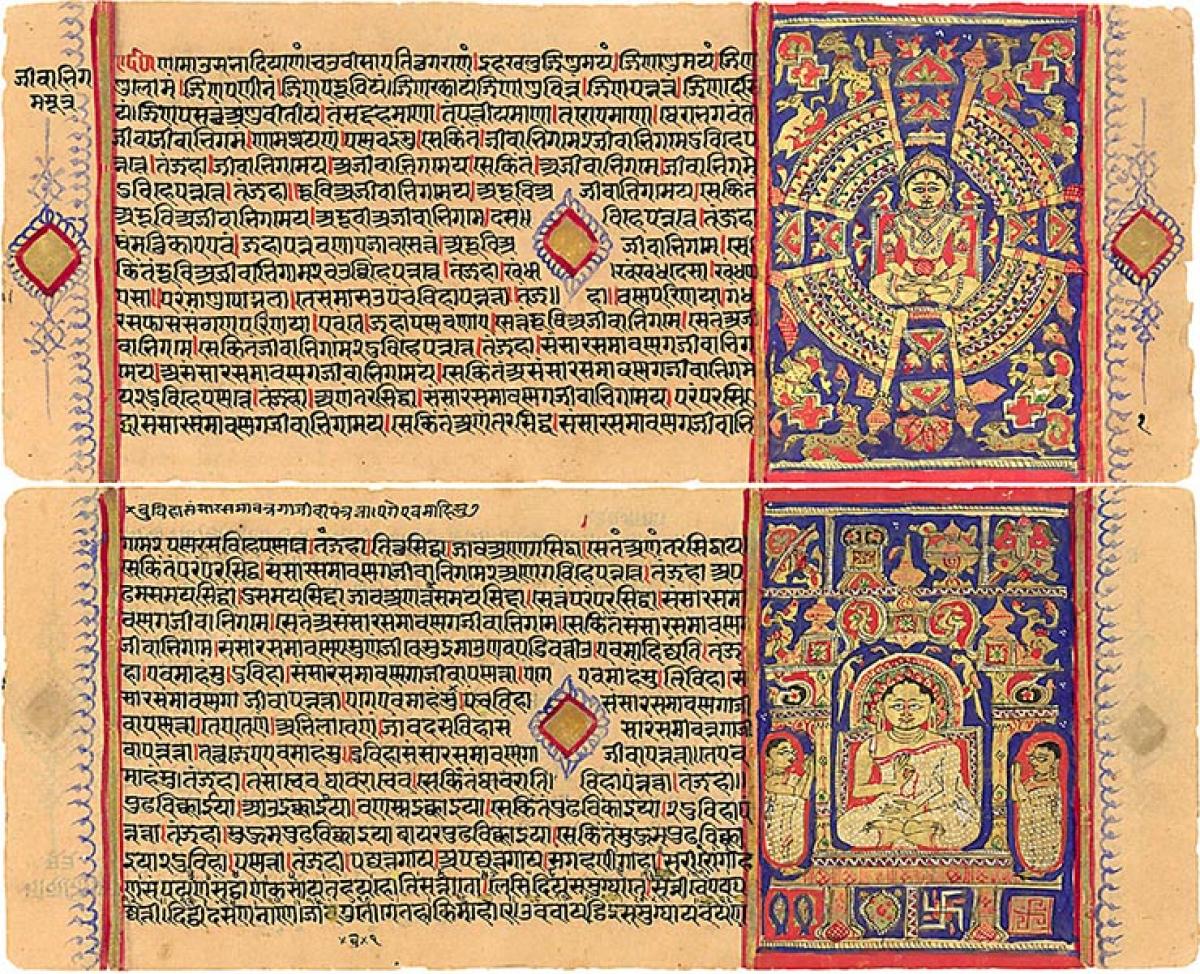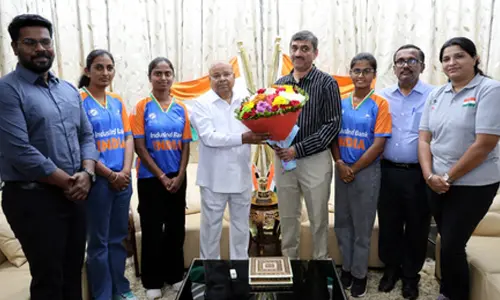Origin and development of Indian languages

Ever since human beings have invented scripts, writing has reflected the culture, lifestyle, society and the polity of contemporary society. In the process, each culture evolved its own language and created a huge literary base. This literary base of a civilisation tells us about the evolution of each of its languages and culture through the span of centuries.
Ever since human beings have invented scripts, writing has reflected the culture, lifestyle, society and the polity of contemporary society. In the process, each culture evolved its own language and created a huge literary base. This literary base of a civilisation tells us about the evolution of each of its languages and culture through the span of centuries.
Role of Sanskrit
Sanskrit is the mother of many Indian languages. The Vedas, Upanishads, Puranas and Dharmasutras are all written in Sanskrit. There is also a variety of secular and regional literature. By reading about the languages and literature created in the past, we shall be able to understand our civilization better and appreciate the diversity and richness of our culture.

All this was possible because of the language that developed during that time. Sanskrit is the most ancient language of our country. It is one of the twenty-two languages listed in the Indian Constitution .The literature in Sanskrit is vast, beginning with the most ancient thought embodied in the Rig Veda, the oldest literary heritage of mankind, and the Zend Avesta.
It was Sanskrit that gave impetus to the study of linguistics scientifically during the eighteenth century. The great grammarian Panini, analysed Sanskrit and its word formation in his unrivalled descriptive grammar Ashtadhyayi. The Buddhist Sanskrit literature includes the rich literature of the Mahayana school and the Hinayana school also.
The most important work of the Hinayana school is the Mahavastu which is a storehouse of stories. While the Lalitavistara is the most sacred Mahayana text which supplied literary material for the Buddhacarita of Asvaghosa. Sanskrit is perhaps the only language that transcended the barriers of regions and boundaries.
From the north to the south and the east to the west there is no part of India that has not contributed to or been affected by this language. Kalhan’s Rajatarangini gives a detailed account of the kings of Kashmir whereas with Jonaraja we share the glory of Prithviraj. The writings of Kalidasa have added beauty to the storehouse of Sanskrit writings.
Other great literacy works, which marked the golden era of Indian literature include ‘Abhijanam Shakuntalam’ and ‘Meghdoot’ by Kalidasa, ‘Mricchakatika’ by Shudraka, ‘Swapna Vasavadattam’ by Bhasa, and ‘Ratnavali’ by Sri Harsha. Some other famous works are Chanakya’s ‘Arthashastra’ and Vatsyayana’s “Kamasutra’
Vedas
The Vedas are the earliest known literature in India. The Vedas were written in Sanskrit and were handed down orally from one generation to the other. Do you know that preservation of the Vedas till today is one of our most remarkable achievements. To be able to keep such a literary wealth as the Vedas intact when the art of writing was not there and there was a paucity of writing material is unprecedented in world history. The word ‘Veda’ literally means knowledge.
In Hindu culture, Vedas are considered as eternal and divine revelations. They treat the whole world as one human family Vasudev Kutumbakam. There are four Vedas, namely, the- Rig Veda, Yajur Veda, Sama Veda and Atharva Veda. Each Veda consists of the Brahmanas, the Upanishads and the Aranyakas. The Rig Veda, Sama Veda and the Yajur Veda are collectively known an Traji. In later years the Atharava Veda was incorporated in this group.
Rig Veda
The Rig Veda is the earliest of the Vedas. It is a collection of 1028 hymns in Vedic Sanskrit. Many of these are beautiful descriptions of nature. The prayers are largely for seeking worldly prosperity. It is believed that these recitations are the natural outpouring of Vedic rishis experiencing a mentally transcendental stage.
Some of the well-known rishis are Vasistha, Gautama, Gritasamada, Vamadeva, Vishvamitra and Atri. The prominent gods of the Rig Veda are Indra, Agni, Varun, Rudra, Aditya, Vayu, Aditi and the Ashwini twins. Some of the prominent goddesses are Usha - the goddess of dawn, Vak - the goddess of speech and Prithvi - the goddess of earth.
Do you know that most of the hymns spoke of universally recognised higher values of life such as truthfulness, honesty, dedication, sacrifice, politeness and culture. The prayers are for seeking worldly prosperity and for the development of a highly cultured society. Along with religion Rig Veda provides us knowledge about social, political and economic condition of ancient India.
Yajur Veda
Yajur means sacrifice or worship. This Veda is concerned mostly with rites and mantras of different sacrifices. It gives directions for the performance of the yajnas. It has both poetic and prose renderings. Being a treatise on rituals, it is the most popular of the four Vedas. There are two major branches of Yajur Veda, namely Shukla and Krishna Yajur Veda i.e. Vajasaneyi Samhita and Taitriya Samhita.
Sama Veda
Sama means melody or songs. This Veda consists of 16,000 ragas and raginis or musical notes. Out of total 1875 verses only 75 are original and others are from the Rig Veda. The Sama Veda prescribes the tunes for the recitation of the hymns of the Rig Veda. It may be called the book of Chants (Saman). This book is an evidence of the development of Indian music during this period.
Atharva Veda
The Atharva Veda is also known as the Brahma Veda. It contains treatment for ninety-nine diseases. The source of this Veda is traced to two rishis called Atharvah and Angiras. The Atharva Veda is of immense value as it represents the religious ideas at an early period of civilisation. It has two branches, the Paippalada and the Saunaka.
This book gives detailed information about the family, social and political life of later Vedic period. In order to understand the Vedas, it is necessary to learn the Vedangas or the limbs of the Vedas. These supplements of the Vedas provide education (siksha), grammar (vyakarana), ritual (kalpa), etymology (nirukta), metrics (chhanda) and astronomy (Jyotisha). A good deal of literature grew around these subjects.
It was written in the form of precepts in the sutra style. A precept was called sutra because of its brevity. The most famous example of this is Panini’s grammar, Ashtadhyayi, which illustrates the rules of grammar and also throws light on society, economy and culture of those times.
Brahmanas and Aranyakas
After the four Vedas, a number of works called the Brahmanas were developed. These books gave a detailed explanation of Vedic rituals and instructions and deal with the science of sacrifice. The latter portions of the Brahmanas were called the Aranyakas while the final parts of the Aranyakas are philosophic books named Upanishads which belong to the later stage of the Brahmana literature. Each of the four Vedas have their own Brahmana books.
Rig Veda had Kaushitaki and Aitreya. Taitteriya belongs to Krishna Yajur Veda and Shatpath belongs to Shukla Yajur Veda. Tandav, Panchvish and Jaimaniya belongs to Atharva Veda. It is through them that we get a detailed information of the social, political and religious life of the people. The Arayankas deal with soul, birth and death and life beyond it. These were studied and taught by men in Vanprastha i.e. Munis and the inhabitants living inside the forests.














